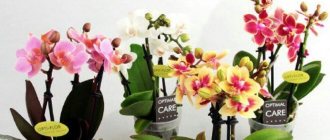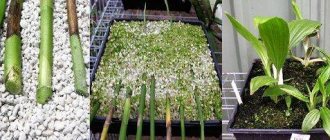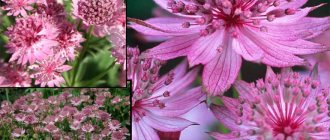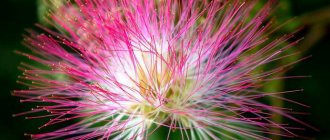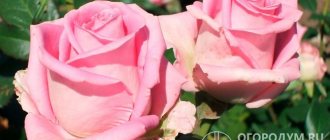We talk about the most common types and varieties of herbaceous and shrubby cinquefoil. You will definitely find something for your garden!
Cinquefoil got its name from the shape of its leaves, which resemble the paw of an animal or the palm of a person. This plant is also called cinquefoil, or Kuril tea.
There are a large number of different types and varieties of cinquefoil. Most often these are perennial shrubs and subshrubs, but herbaceous annuals and biennials are also present in this plant “family”.
We will tell you about the most common cultivated types and decorative varieties of Kuril tea.
The most popular types and varieties of cinquefoil
Cinquefoil herbaceous is a perennial flowering plant. It covers the ground with a dense green carpet. Carved leaves are fanned out on the stems and resemble paws. Popular herbaceous species in gardening:
- Nepalese;
- goose;
- white;
- straight or galangal;
- silver
The height of the stems of herbaceous varieties is from 30 to 90 centimeters.
Shrubby cinquefoil is a plant with tough shoots, popular in landscape design. The bushes retain their shape for a long time after pruning and bloom profusely. Types of shrubby cinquefoil that are often found in private gardens and city parks:
- Kuril;
- Daurian cinquefoil;
- Abbotswood;
- Red Ace.
Hybrid cinquefoil combines varieties with straight stems, glossy and double flowers in bright shades. Popular hybrids:
- Monarch Velvet;
- Ark En Sel;
- William Rollison.
Perennial cinquefoil that grows in the wild and is suitable for garden cultivation:
- forked - grows in rocky, sandy soil. The herbaceous plant forms a green cover 25 centimeters thick. Leaves with smooth edges and carved tips. The flowers are traditionally yellow and small, from 8 millimeters to 1.5 centimeters in diameter;
- strawberry-like - a low-creeping forest perennial similar to strawberries with carved velvety leaves, collected in pairs at the roots. The buds with a diameter of 16 millimeters are combined into inflorescences;
- Siberian - a tall variety with erect reddish stems reaching 60 centimeters in height. The leaves have serrated edges, are silvery on the inside and covered with down, like the stems. Yellow small flowers are collected in inflorescences.
Cinquefoil bush is known as Kuril tea. From the twigs and leaves of the plant brewed in boiling water, a vitamin drink is obtained.
Features of care and cultivation in open ground
The shrubby cinquefoil is not demanding, it works great as a cover plant, and is suitable for ridges and rocky gardens.
Requirements for soil and planting site
The shrub is resistant to frost. Cultivars with orange or pink flowers growing in a slightly shaded location will have more colored flowers than plants growing in full sun.
Soil requirements:
- It is better to grow shrubs on light, sandy, moderately moist soils, in well-lit places;
- It is necessary to regularly water the shrubby cinquefoil, it is sensitive to long-term drying out of the soil and excessive heating;
- the corresponding pH of the environment is 4.5-6.5; a higher pH value can negatively affect the flowering of the bush and cause iron deficiency;
- if the garden has heavy, compacted soil, there is no need to abandon the cinquefoil shrub; it is enough to add an admixture of sand or gravel to the soil to improve the structure and permeability of the substrate;
- The shrub blooms more abundantly in moister soil;
- The plant should not be planted on heavy, sandy, too wet soils and places with a high groundwater level;
- Cinquefoil develops poorly in a substrate with a high calcium content.
Watering and fertilizing
Immediately after planting, as well as on hot summer days, shrubby cinquefoil should be watered abundantly. The root ball should not be allowed to dry out. The shrub is especially sensitive to lack of water in the first years of growth.
Attention! Cinquefoil is very sensitive to waterlogging; stagnation of water should be avoided.
On the contrary, the plant’s demand for fertilizers is very modest. Moreover, excess fertilizer interferes with the development of flowers, so fertilizing cinquefoil should be introduced carefully.
At the beginning of the growing season, it is worth using a multicomponent fertilizer for flowering plants.
Pests and diseases
Bush cinquefoils are rarely affected by pests or diseases. The main problem in growing is that the roots can rot in heavy, flooded soils. Diseases can also be caused by a lack of sunlight. Then the plant is attacked by fungal diseases.
Pests do not like this plant.
Trimming
To make the shrub bloom profusely every year, pruning is done. The greatest advantages of cinquefoil:
- attractive crown,
- abundant flowering,
- versatility of use,
- ease of cultivation.
In order for the plant to show the fullness of its positive qualities, it should be pruned regularly.
Why is pruning needed?
With age, the branches of cinquefoil become woody and somewhat overloaded with a large number of thin, weak, elongated shoots, which produce fewer and fewer flowers. To avoid this condition, regular pruning of the cinquefoil is necessary. Immediately after flowering, you need to cut the stems using pruners. Also, shoots that are too lush and bare at the bottom without leaves are trimmed.
Pruning shrubby cinquefoil has 2 goals:
- stimulating bush flowering,
- branching.
First trim
The first pruning of shrubby cinquefoil is done after planting. Then cut off all weak and damaged growths. The remaining shoots are cut in half to encourage new shoots to develop from the base of the plant. Essential pruning of cinquefoil involves removing remaining flowers and maintaining a compact crown of the plant.
Sanitary pruning
Caring for cinquefoil necessarily includes disease prevention. This requires sanitary pruning. This pruning is carried out in early spring - from the second ten days of March to the end of April. Every year it is worth carrying out a sanitary inspection of cultivated shrub plants and, if necessary, performing sanitary cutting. Dry, damaged, disease-infected, weak shoots of cinquefoil are cut off.
Stimulating
Cutting the cinquefoil should encourage the plant to develop many new shoots so that they do not become bare at the base as they age. In mid-spring, all long, lush shoots should be pruned. Old and excessively thick shoots of cinquefoil are shortened by 1/3.
Rejuvenating
For older cinquefoil bushes, rejuvenating pruning is recommended every few years. In this case, remove some of the oldest shrub growth near the ground.
The shrub also allows for heavy pruning (up to 10 cm above the ground) for rejuvenation. After this, new shoots of cinquefoil will develop quickly, and the crown will become denser.
Yellow flowers
In nature, the plant blooms with small yellow flowers. With the help of selection, decorative species with buds of different shades appeared:
- Goldstar - bushes with a spherical crown with a diameter of 120 centimeters. Plant height is 80 centimeters. The bright yellow flowers, 5 centimeters in diameter, bloom from early June to October. The fast-growing variety adds 15 centimeters in height and 20 centimeters in width per year;
- Jackman Variety - a tall variety of cinquefoil 1.5 meters in height;
- Hackman's Giant is a type of Kuril tea with a height of 70 to 100 centimeters. The pillow-shaped crown reaches 1 meter in diameter. Golden flowers bloom on the bushes;
- Elizabeth - forms a crown in the form of a pillow. Opens bright yellow flowers that look good against the background of coniferous shrubs;
- Kobold - quickly stretches to a minimum height of 60 centimeters. The maximum height does not reach a meter. Until September, light yellow flowers open on the bushes;
- Yellow Queen - a hybrid variety that grows 30 centimeters up from the ground, with shiny flowers reaching more than 3 centimeters in diameter.
See also
Description of Waller's balsam varieties, cultivation, propagation and careRead
Potentilla species with yellow flowers retain their color in hot, cloudless weather.
Reproduction
A bush that has reached the age of three to four years can be propagated by division. The plant is dug up in spring or autumn. The roots are washed and cut into several parts, treated with a preparation that stimulates root growth, and planted, maintaining a distance of 20-40 cm between the bushes.
Propagation by cuttings should be done in cloudy weather; this can be done throughout the summer, and preferably in July - August. Cuttings about ten centimeters long are cut from the ends of any shoots.
Flowers are removed from the branches and planted for rooting in moist, fertile soil or in a shady place in the garden, covered with a jar. The cuttings need to be moistened several times a day, the emerging buds must be removed, and after 1-1.5 months the plants can be transplanted to a permanent place.
For propagation by layering, shoots that grow low near the ground are selected. Cuts are made on them from below, placed in a prepared trench, covered with earth and attached in several places with hooks. After the roots have formed, the shoots are separated and replanted.
Propagation by seeds takes quite a long time. Herbaceous species can be sown in open ground in the fall, but it is better to grow seedlings. Soak dried cinquefoil seeds in water for a day, then plant them in fertile, loose soil, water and cover with film. After a month, plant the seedlings in the ground.
Pink varieties
The following decorative types of Kuril tea look more original:
- Pink Beauty - the rich pink color of the petals does not change until the end of flowering;
- Pink Paradise - covered in bright pink flowers in July. Its peculiarity is semi-double petals;
- Princess - during a short flowering period from June to August, it blooms soft pink buds. The shade is not preserved and fades to white.
The pink color is not stable, so cinquefoil often loses its delicate color in the sun.
Orange varieties
The following types of cinquefoil are used to decorate borders and flower beds:
- Tangerine - the petals of a compact shrub change color. Copper tone appears in the shade and twilight, and yellow - at midday, in bright sun. The buds open in July;
- Mango Tango - orange-red petals with a yellow gradient in the center. The bush gives small growth and is distinguished by bright flowering;
- Hoplis Orange - petals retain their bright color when exposed to sunlight. The leaves shine thanks to silvery fibers. The variety blooms during the three summer months and until October.
The plants differ in the shades of their petals, but retain their natural ability to bloom for a long time.
Landing
Plants prefer light, loose soil with a slightly alkaline or neutral environment. Representatives with pink flowers are the most demanding on soil quality. With the exception of white cinquefoil, which grows well in the shade, choose a well-lit place for planting, but slightly sheltered from bright sunlight.
Bush cinquefoil is planted in open ground in early April; it can be planted in late summer or early autumn. It is advisable to purchase seedlings with several shoots.
Before planting, the plant is watered with warm water. Dig a hole 50-60 cm deep, for seedlings from a container - twice the size of the earthen clod. A drainage layer 15-20 cm thick is laid out from pebbles or crushed stone.
To prepare the mixture, you need leaf soil, peat and sand in a ratio of 2:2:1, and 100-150 grams of mineral fertilizers are added here.
Pour a layer of mixture and place the plant in the planting hole, being careful not to bury the root collar. Fill the free space with planting mixture, water and mulch. After planting in open ground, you need to water the seedling well for three weeks.
Red species
Potentilla varieties with red flowers are low hybrids:
- Marion Red Robin is a creeping plant. Red flowers in a muted brick hue appear in June and fade by September;
- Red Ace - a subshrub at the beginning of flowering, blooms bright scarlet flowers. In the sun they change their shade to copper;
- Gibson Scarlet - cinquefoil with blood-red shiny flowers, straight fleecy stems, 60 centimeters high;
- Miss Wilmott - belongs to the Nepalese varieties, is distinguished by lush flowering. The petals of the buds combine cherry and pink shades;
- Floris - petals of a coral shade acquire a fiery red color at the core.
An unusual variety of Nepalese cinquefoil is Roxana. The color of its buds is a mixture of coral, orange and red shades.
Red species of subshrubs will add a bright accent to a composition of white and yellow roses.
Use in landscape design
Low-growing types of cinquefoil are used to fill empty spaces on the site. For compositions, the tall variety combines beautifully with its smaller neighbors.
Plant in a flower arrangement
You can make a living flowering hedge from shrubs by simply planting seedlings in a row. Climbing plant species are used by professionals to design high flower beds and gazebos.
Care and planting work is not difficult. The main thing is to follow all these simple rules. With careful attention, the bushes will bloom profusely and delight with their grace.
Double flowers
Hybrid double and semi-double varieties bloom brightly, like Nepalese cinquefoil:
- Vulcan - opens large buds, red petals surround a yellow core;
- Emily is a plant with large flowers of a rich red hue. The petals are edged with a golden-yellow edge. The serrated leaves are shaped like strawberries;
- Ark-en-Sil is a low-growing strawberry-like hybrid that stands out for its dark red flowers with a crimson tint. The edges of the petals are decorated with a yellow border;
- Snowbird is a frost-tolerant shrub with light green leaves in June covered with white flowers with a yellow tint in the center. The variety blooms until the first frost.
Trimmed shrubs with double flowers from a distance resemble a rose bush.
Large-flowered Potentilla
Types of Kuril tea with large flowers are used in Japanese garden design. The plants are also distinguished by their large leaves. The diameter of the open buds is 4.5-5 centimeters.
See also
Rules for growing and caring for rhododendron at homeRead
Large-flowered varieties:
- Darts Golddigger - a shrubby low cinquefoil covered in lemon-hued flowers. The frost-resistant plant is planted as a hedge. Flowering can be observed all summer and until October;
- Klondike - a shrub reaches a meter in height, blooms buds of a pale yellow hue. Tough shoots retain their shape for a long time after pruning. The variety is also suitable for hedges;
- Goldfinger - thin shoots form a rounded crown. The flowers are dark yellow;
- White Lady is a representative of the large-flowered group with white buds.
Potentilla varieties with large flowers come from wild Kuril tea, so yellow shades predominate in the color of their buds.
Cream varieties
The main color of the buds is called cream, but the color invariably has a yellow undertone:
- Day Down is a low shrub 60 centimeters high with a spherical crown. The flowers are distinguished by a yellow tint, which becomes brighter towards the center;
- Klondike - the bush grows up to 80 centimeters in height. Cream flowers with a yellow undertone fade towards the end of flowering;
- Primrose Beauty is an ornamental shrub with creamy yellow flowers reaching 90 centimeters in height. At the beginning of flowering, the petals are completely golden. By the end of the period they become lighter. The center remains deep yellow;
- Tilford Krim is short in stature, 50 centimeters. The color of the petals is creamy white. Flowering begins at the end of May and ends in September;
- Catherine Dix is a frost-resistant, light-loving hybrid. A distinctive feature is silvery-green shiny foliage.
Cream types also fade in the sun, like pink ones.
Ivory flowers
The shades of white varieties are close to the noble color:
- Abbotswood - a meter-high shrub is often planted on an alpine hill. Its flowers are gathered in clusters;
- Vichi is a tall shrub reaching 150 centimeters in length and width. A distinctive feature is the small red stamens;
- McCay's White is a bush variety with a creamy undertone to the petals. The stamens are distinguished by bright yellow dots;
- Menkhi - distinguished by green leaves with silver edges;
- Farrers White is an elegant flowering shrub.
Breeders have not yet been able to obtain pure ivory color. Similar tones are also found among cream-colored cinquefoil species.
Compatibility with other plants and interior items
The non-aggressive cinquefoil makes excellent friends with various plants in the garden bed. Its bright flowers are combined with coniferous flora, with tall deciduous trees and surrounded by other flowering shrubs. When it comes to color combinations, cinquefoil looks good with white and blue flowers of other plants. Surrounded by hostas and bergenia, it looks especially impressive due to the textured leaves of these “neighbors”.
The dark leaves of Geyrhera will highlight the beauty of the foliage and flowering of the shrub. White-flowered species are suitable for dwarf pines or junipers. The yellow flowers of the plant will create a magical composition with purple lavender, catnip or hyssop. Cultivars of barberry bushes, spirea and cotoneaster will become spectacular neighbors to cinquefoil.
The peculiarity of the garden shrub is its unusual appearance, which changes depending on the time of year. In autumn, the leaves become an attractive green color with a brilliant tint, so the plant should be planted next to the contrasting transitions of other “garden inhabitants”.
Cinquefoil should be planted near iron garden furniture. It will make the interior of the site romantic and gentle. In combination with rattan chairs, a table and other items, the plant will turn the area into a cozy place.
Low growing varieties
Hybrids that do not grow above 50-60 centimeters:
- Jolaina - a dwarf cinquefoil with large yellow-orange flowers, characterized by abundant flowering and frost resistance;
- Dakota Sunrise - a dense cushion-shaped shrub with pubescent leaves blooms profusely with yellow flowers;
- Rhodocalyx - low cinquefoil with snow-white buds;
- Summerflower - shoots stretch upward and form a crown in the shape of a hemisphere. Large yellow flowers stand out against the background of gray-green small leaves. Flowering lasts from early summer to late autumn. The color of the petals is yellow with a golden tint;
- Goldteppich - the rich yellow color of the variety’s buds will serve as an accent in the coniferous composition. The bushes are winter hardy and immune to powdery mildew.
Hybrid varieties combine several decorative qualities. Low-growing bushes bloom with large buds. Potentilla species with flowers in fiery shades are classified as red and orange. What they have in common with their regular herbaceous relatives is resistance to cold and ease of care.
Mister summer resident warns: diseases and pests
The shrub has good immunity and rarely suffers from insects and diseases. But there are a number of pathologies that still affect cinquefoil:
- rust;
- spotting;
- powdery mildew.
If an annual plant is affected, then no measures are taken. In September, the bushes are already thrown away, but the summer decorativeness will not decrease in any way. If there are diseases in perennials, they are treated with fungicides. Colloidal sulfur or Bordeaux mixture works well. Among the pests, the plant is occasionally attacked by cutworms. They are eliminated using insecticides Decis and Fitoverm.
